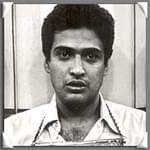
Innocence
Executed But Possibly Innocent
There is no way to tell how many of the 1646 people executed since 1976 may also have been innocent. Courts do not generally entertain claims of innocence when the defendant is dead. Defense attorneys move on to other cases where clients’ lives can still be saved.
It is now broadly accepted that the judicial review provided to death-penalty cases in the United States has been inadequate to prevent the execution of at least some prisoners who were wrongly convicted and sentenced to death. Some cases with strong evidence of innocence include:
- Carlos DeLuna (Texas, convicted 1983, executed 1989)
- Ruben Cantu (Texas, convicted 1985, executed 1993)
- Larry Griffin (Missouri, convicted 1981, executed 1995)
- Joseph O’Dell (Virginia, convicted 1986, executed 1997)
- David Spence (Texas, convicted 1984, executed 1997)
- Leo Jones (Florida, convicted 1981, executed 1998)
- Gary Graham (Texas, convicted 1981, executed 2000)
- Claude Jones (Texas, convicted 1989, executed 2000)
- Cameron Todd Willingham (Texas, convicted 1992, executed 2004)
- Sedley Alley (Tennessee, convicted 1987, executed 2006)
- Troy Davis (Georgia, convicted 1991, executed 2011)
- Lester Bower (Texas, convicted 1984, executed 2015)
- Brian Terrell (Georgia, convicted 1995, executed 2015)
- Richard Masterson (Texas, convicted 2002, executed 2016)
- Robert Pruett (Texas, convicted 2002, executed 2017)
- Carlton Michael Gary (Georgia, convicted 1986, executed 2018)
- Domineque Ray (Alabama, convicted 1999; executed 2019)
- Larry Swearingen (Texas, convicted 2000, executed 2019)
- Walter Barton (Missouri, convicted 1993, executed 2020)
- Nathaniel Woods (Alabama, convicted 2005, executed 2020)
- Marcellus Williams (Missouri, convicted in 2001, executed 2024)

Carlos DeLuna
Texas — Convicted: 1983; Executed: 1989
A Chicago Tribune investigation released in 2006 revealed groundbreaking evidence that Texas may have executed an innocent man in 1989. The defendant, Carlos DeLuna, was executed for the fatal stabbing of Texas convenience store clerk Wanda Lopez in 1983. The evidence uncovered by reporters Maurice Possley and Steve Mills cast doubt on DeLuna’s guilt and points towards another man, Carlos Hernandez, who had a record of similar crimes and repeatedly confessed to the murder.
A news piece aired on ABC’s “World News Tonight” also covered this story. The new evidence cast strong doubt on DeLuna’s guilt.
Subsequent investigation by Professor James Liebman of Columbia Law School and a team of his students in the Columbia DeLuna Project unearthed powerful evidence of DeLuna’s innocence and described in detail serious problems in the prosecution’s case against him. Their 2014 book, The Wrong Carlos: Anatomy of a Wrongful Execution, describes the faulty eyewitness testimony, the police’s failure to investigate Carlos Hernandez, and the misrepresentations by the prosecution that “the other Carlos” DeLuna claimed committed the killing was “a phantom,” while one of the prosecutors knew of Hernandez’s existence and his criminal history. Hernandez and DeLuna looked so similar that their own families mistook photos of the men for each other. Moreover, Hernandez had a history of violent crimes similar to the murder for which DeLuna was executed. Professor Liebman’s website for the book includes extraordinarily detailed documentation of the case, including police and witness records, trial transcripts, and photographs.
In 2021, Netflix released a critically acclaimed documentary film, The Phantom, about the case.
See Professor James Liebman and the Columbia DeLuna Project, The Wrong Carlos: Anatomy of a Wrongful Execution (Columbia Universty Press, 2014).
For a shorter version of Professor James Liebman’s investigation, see Los Tocayos Carlos: Anatomy of a Wrongful Execution (2012).
See the Chicago Tribune’s Investigation, Did This Man Die…for This Man’s Crime?
Watch the documentary film, The Phantom, written and directed by Patrick Forbes (2021).
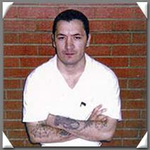
Ruben Cantu
Texas — Convicted: 1985; Executed: 1993
A two-part investigative series by the Houston Chronicle cast serious doubt on the guilt of a Texas man who was executed in 1993. Ruben Cantu had persistently proclaimed his innocence and was only 17 when he was charged with capital murder for the shooting death of a San Antonio man during an attempted robbery. Now, the prosecutor and the jury forewoman have expressed doubts about the case. Moreover, both a key eyewitness in the state’s case against Cantu and Cantu’s co-defendant have come forward to say that Texas executed an innocent man.
Juan Moreno, who was wounded during the attempted robbery and was a key eyewitness in the case against Cantu, now says that it was not Cantu who shot him and that he only identified Cantu as the shooter because he felt pressured and was afraid of the authorities. Moreno said that he twice told police that Cantu was not his assailant, but that the authorities continued to pressure him to identify Cantu as the shooter after Cantu was involved in an unrelated wounding of a police officer. “The police were sure it was (Cantu) because he had hurt a police officer. They told me they were certain it was him, and that’s why I testified.… That was bad to blame someone that was not there,” Moreno told the Chronicle.
In addition, David Garza, Cantu’s co-defendant during his 1985 trial, recently signed a sworn affidavit saying that he allowed Cantu to be accused and executed even though he wasn’t with him on the night of the killing. Garza stated, “Part of me died when he died. You’ve got a 17-year-old who went to his grave for something he did not do. Texas murdered an innocent person.”
Sam D. Millsap, Jr., the Bexar County District Attorney who charged Cantu with capital murder, said he never should have sought the death penalty in a case based on testimony from an eyewitness who identified a suspect only after police showed him Cantu’s photo three seperate times.
Miriam Ward, forewoman of the jury that convicted Cantu, said the jury’s decision was the best they could do based on the information presented during the trial. She noted, “With a little extra work, a little extra effort, maybe we’d have gotten the right information. The bottom line is, an innocent person was put to death for it. We all have our finger in that.” (Houston Chronicle, November 20 & 21, 2005 and Associated Press, November 21, 2005).
Read “Did Texas Execute An Innocent Man?” by Lise Olsen, Houston Chronicle (2005)
Watch “Did Texas Execute Innocent Men?” — Dan Rather Reports reveals new details surrounding two capital murder cases in Texas — leading to the executions of Ruben Cantu and Carlos De Luna that may have occurred as the result of flawed evidence (September 2007).
UPDATE: Bexar County District Attorney Susan Reed issued a report in 2007 finding that Ruben Cantu was guilty of the crime for which Texas executed him in 1993. However, critics have noted that Reed was formerly a judge who handled Cantu’s appeal and set his execution date, raising a conflict of interest in conducing an investigation of his guilt. For more information see: “Report Fails to Erase Doubt that Texas Executed an Innocent Man.”

Larry Griffin
Missouri — Convicted: 1981; Executed: 1995
A year-long investigation by the NAACP Legal Defense and Educational Fund has uncovered evidence that Larry Griffin may have been innocent of the crime for which he was executed by the state of Missouri on June 21, 1995. Griffin maintained his innocence until his death, and investigators say his case is the strongest demonstration yet of an execution of an innocent man. The report notes that a man injured in the same drive-by shooting that claimed the life of Quintin Moss says Griffin was not involved in the crime, and the first police officer on the scene has given a new account that undermines the trial testimony of the only witness who identified Griffin as the murderer. Based on its findings, the NAACP has supplied the prosecution with the names of three men it suspects committed the crime, and all three of the suspects are currently in jail for other murders. Prosecutor Jennifer Joyce said she has reopened the investigation and will conduct a comprehensive review of the case over the next few months. “There is no real doubt that we have an innocent person. If we could go to trial on this case, if there was a forum where we could take this to trial, we would win hands down,” stated University of Michigan law professor Samuel Gross, who supervised the investigation into Griffin’s case. (St. Louis Post-Dispatch, July 11, 2005).
See “NAACP Legal Defense and Educational Fund Report on Larry Griffin”
Listen to “Missouri Execution Case Reopened” from NPR: All Things Considered (July 12, 2005)
Read “Did Missouri Execute An Innocent Man?” by Associated Press (July 12, 2005)
UPDATE: On July 12, 2007 the St. Louis Circuit Attorney concluded that Larry Griffin was guilty after an extensive review.
- Circuit Attorney report: Summary
- Circuit Attorney report: Factual and legal history
- Circuit Attorney report: Appellate process
- Circuit Attorney report: Investigative findings, analysis and conclusions
- Circuit Attorney report: Appendix A through C
- Circuit Attorney report: Appendix D through G

Joseph O’Dell
Virginia — Convicted: 1986; Executed: 1997
New DNA blood evidence has thrown considerable doubt on the murder and rape conviction of O’Dell. In reviewing his case in 1991, three Supreme Court Justices, said they had doubts about O’Dell’s guilt and whether he should have been allowed to represent himself. Without the blood evidence, there is little linking O’Dell to the crime. In September, 1996, the 4th Circuit of the U.S. Court of Appeals reinstated his death sentence and upheld his conviction. The U.S. Supreme Court refused to review O’Dell’s claims of innocence and held that its decision regarding juries being told about the alternative sentence of life-without-parole was not retroactive to his case. O’Dell asked the state to conduct DNA tests on other pieces of evidence to demonstrate his innocence but was refused. He was executed on July 23rd.
Read “Virginia Inmate Executed Despite International Campaign” by CNN (July 23, 1997)
See “Commonwealth v. Joseph O’Dell: Truth and Justice or Confuse the Courts? The DNA Controversy” by Lori Urs, New England School of Law: Journal on Criminal and Civil Confinement (Winter 1999)
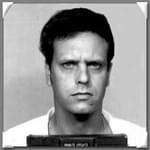
David Spence
Texas — Convicted: 1984; Executed: 1997
Spence was charged with murdering three teenagers in 1982. He was allegedly hired by a convenience store owner to kill another girl, and killed these victims by mistake. The convenience store owner, Muneer Deeb, was originally convicted and sentenced to death, but then was acquitted at a re-trial. The police lieutenant who supervised the investigation of Spence, Marvin Horton, later concluded: “I do not think David Spence committed this crime.” Ramon Salinas, the homicide detective who actually conducted the investigation, said: “My opinion is that David Spence was innocent. Nothing from the investigation ever led us to any evidence that he was involved.” No physical evidence connected Spence to the crime. The case against Spence was pursued by a zealous narcotics cop who relied on testimony of prison inmates who were granted favors in return for testimony.
Read “A Closer Look at Five Cases That Resulted in Executions of Texas Inmates” by Raymond Bonner and Sara Rimer, New York Times (May 14, 2000)
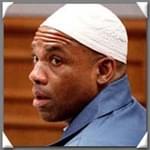
Leo Jones
Florida — Convicted: 1981; Executed: 1998
Jones was convicted of murdering a police officer in Jacksonville, Florida. Jones signed a confession after several hours of police interrogation, but he later claimed the confession was coerced. In the mid-1980s, the policeman who arrested Jones and the detective who took his confession were forced out of uniform for ethical violations. The policeman was later identified by a fellow officer as an “enforcer” who had used torture. Many witnesses came forward pointing to another suspect in the case.
Read “Questions of Innocence: Legal Roadblocks Thwart New Evidence on Appeal” by Steve Mills, Chicago Tribune (December 18, 2000)
Gary Graham
Texas — Convicted: 1981; Executed: 2000
On June 22, 2000, Gary Graham was executed in Texas, despite claims that he was innocent. Graham was 17 when he was charged with the 1981 robbery and shooting of Bobby Lambert outside a Houston supermarket. He was convicted primarily on the testimony of one witness, Bernadine Skillern, who said she saw the killer’s face for a few seconds through her car windshield, from a distance of 30 – 40 feet away. Two other witnesses, both who worked at the grocery store and said they got a good look at the assailant, said Graham was not the killer but were never interviewed by Graham’s court appointed attorney, Ronald Mock, and were not called to testify at trial. Three of the jurors who voted to convict Graham signed affidavits saying they would have voted differently had all of the evidence been available.
See “Guilt of Texas Inmate Gary Graham Debated as Execution Draws Near” by CNN (June 21, 2000)
Read “Death Row Man Executed” by BBC News (June 23, 2000)
See DPIC’s Capital Punishment in Context: The Case of Gary Graham

Claude Jones
Texas — Convicted: 1989; Executed: 2000
DNA tests raise serious doubts about the conviction of Claude Jones, executed in Texas in 2000. The tests revealed that a strand of hair found at the scene of a liquor-store shooting did not belong to Jones, as was originally implied by the prosecution. Instead, the hair belonged to the victim. Jones was executed for the murder of the store’s owner. The strand of hair was the only piece of physical evidence that placed Jones at the scene of the crime, and this revelation raises the question of whether Texas executed the wrong person for the murder. Before his execution in 2000, Jones’s lawyers filed petitions for a stay with both a district court and with the Texas Court of Criminal Appeals, requesting that the strand of hair be submitted for DNA testing. The necessary DNA technology had not been developed at the time the crime in 1989, but was available in 2000. Both courts, along with then-Governor George W. Bush, denied Jones a stay of execution. Apparently, Gov. Bush was not even informed by his clemency advisors about the request for the DNA test. Barry Scheck, co-founder of the Innocence Project, said “The DNA results prove that testimony about the hair sample on which this entire case rests was just wrong. Unreliable forensic science and a completely inadequate post-conviction review process cost Claude Jones his life.”
In 2007, the Innocence Project, along with the Texas Observer, the Innocence Project of Texas and the Texas Innocence Network filed a lawsuit to obtain the hair for DNA testing. In 2010, Judge Paul Murphy ruled in favor of the Observer and the innocence groups and ordered prosecutors to turn over the evidence for DNA testing. Duane Jones, Claude Jones’s son, said, “Knowing that these DNA results support his innocence means so much to me, my son in the military and the rest of my family. I hope these results will serve as a wakeup call to everyone that serious problems exist in the criminal justice system that must be fixed if our society is to continue using the death penalty.” Jones was one of the last inmates executed before Gov. Bush left office to become President.
(D. Mann, “Texas Observer Exclusive: DNA Tests Undermine Evidence in Texas Execution,” Texas Observer, November 11, 2010).
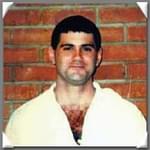
Cameron Willingham
Texas — Convicted: 1992; Executed: 2004
After examining evidence from the capital prosecution of Cameron Willingham, four national arson experts have concluded that the original investigation of Willingham’s case was flawed, and it is possible the fire was accidental. The independent investigation, reported by the Chicago Tribune, found that prosecutors and arson investigators used arson theories that have since been repudiated by scientific advances. Willingham was executed in 2004 in Texas despite his consistent claims of innocence. He was convicted of murdering his three children in a 1991 house fire.
Arson expert Gerald Hurst said, “There’s nothing to suggest to any reasonable arson investigator that this was an arson fire. It was just a fire.” Former Louisiana State University fire instructor Kendall Ryland added, “[It] made me sick to think this guy was executed based on this investigation.… They executed this guy and they’ve just got no idea — at least not scientifically — if he set the fire, or if the fire was even intentionally set.”
Willingham was convicted of capital murder after arson investigators concluded that 20 indicators of arson led them to believe that an accelerent had been used to set three separate fires inside his home. Among the only other evidence presented by prosecutors during the the trial was testimony from jailhouse snitch Johnny E. Webb, a drug addict on psychiatric medication, who claimed Willingham had confessed to him in the county jail. Evidence discovered years after the Willingham execution showed that the prosecution had given Webb favorable treatment, then deliberately elicited perjured testimony from Webb that he had been promised and given nothing for his testimony. (The Marshall Project, August 3, 2014).
Some of the jurors who convicted Willingham were troubled when told of the new case review. Juror Dorinda Brokofsky asked, “Did anybody know about this prior to his execution? Now I will have to live with this for the rest of my life. Maybe this man was innocent.” Prior to the execution, Willingham’s defense attorneys presented expert testimony regarding the new arson investigation to the state’s highest court, as well as to Texas Governor Rick Perry. No relief was granted and Willingham was executed on February 17, 2004. Coincidentally, less than a year after Willingham’s execution, arson evidence presented by some of the same experts who had appealed for relief in Willingham’s case helped free Ernest Willis from Texas’s death row. The experts noted that the evidence in the Willingham case was nearly identical to the evidence used to exonerate Willis. (Chicago Tribune, December 9, 2004).
Read “Texas Man Executed on Disproved Forensics” by Steve Mills and Maurice Possley, Chicago Tribune (December 9, 2004)
Read “Was an Innocent Man Executed in Texas?” by Anderson Cooper 360 Blog (April 9, 2007)
Read “The Prosecutor and the Snitch. Did Texas execute an innocent man?” by Maurice Possley, The Marshall Project (August 3, 2014)
See also The Ernest Willis Case
Sedley Alley
Tennessee — Convicted: 1987; Executed: 2006
Sedley Alley was convicted and sentenced to death in 1987 for the rape and murder of Lance Cpl. Suzanne Collins near the barracks of the Naval Air Station in Millington, Tennessee. The lawyers appointed to represent him at trial failed to investigate glaring inconsistencies between the physical evidence and a confession Alley consistently said had been coerced. Instead, with no prior history of mental illness, they argued that he suffered from a multiple-personality disorder and was not guilty by reason of insanity.
In 2003, after Alley had lost his appeals, new lawyers were appointed to represent him in clemency proceedings. The clemency lawyers found numerous inconsistencies in the state’s evidence, unearthed evidence that pointed to another suspect who fit the eyewitness descriptions of the murderer and had a car that matched descriptions of the murderer’s car, and discovered that Alley had been at home under police surveillance at the time Collins was raped and killed. Based on these discoveries, they asked for DNA testing of clothing and the murder weapon.
The evidence persuaded the Tennessee Board of Parole to recommend that then-Governor Phil Bredesen stay Alley’s execution and order DNA testing. Instead, Bredesen directed the lawyers to present their request for testing to the Tennessee courts, which refused to allow the testing to occur. Five years later, the Tennessee Supreme Court disavowed its decision in Alley’s case, saying they had misapplied Tennessee’s post-conviction DNA testing act. On May 1, 2019, after new evidence suggested another man may have committed the murder, the Innocence Project filed a petition in Shelby County Criminal Court on behalf of Alley’s estate renewing Alley’s request for DNA testing. “The courts got it wrong in 2006 when they allowed Mr. Alley to be executed before testing the DNA,” Innocence Project co-founder Barry Scheck said. “If Mr. Alley were alive today, he would be entitled to DNA testing under the … statute. We now have a chance to learn the truth in this case.”
The trial court denied the Alley estate’s petition, and the estate has appealed.
Read Death Penalty Information Center, Estate of Executed Tennessee Prisoner Seeks DNA Testing to Establish His Innocence, May 2, 2019.
Jim Dwyer, Her Father Was Executed for Murder. She Still Wants to Know if He Did It, New York Times, May 1, 2019.
Adam Tamburin, Family of executed Tennessee inmate calls for DNA tests in renewed hope to ‘find the truth’, Commercial Appeal, May 1, 2019
Read the Petition for Post-Conviction DNA Analysis filed in In re: Sedley Alley and the Application for DNA Testing, Pardon, and Exoneration of Sedley Alley sent to Gov. Bob Lee.
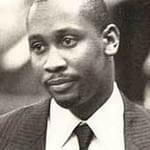
Troy Davis
Georgia — Convicted: 1991; Executed: 2011
After a hearing on September 19, 2011, the Georgia Board of Pardons and Paroles denied clemency to Troy Davis, despite presentation of testimony casting doubt on his guilt. Brian Kammer, one of Davis’s attorneys, said, “I am utterly shocked and disappointed at the failure of our justice system at all levels to correct a miscarriage of justice.” Davis’s claims of innocence received international attention, and calls for clemency were made by Pope Benedict XVI, former President Jimmy Carter, former FBI Director William Sessions, former Georgia Supreme Court Chief Justice Norman Fletcher and others.
Doubts about Davis’s guilt were raised when some prosecution witnesses changed their stories after giving testimony against Davis, including accusations pointing to another suspect as the murderer of a police officer in Savannah. The Board heard testimony from a juror in Davis’s original trial who now says she has too much doubt about his guilt and would change her verdict. They also heard from a witness who originally testified against Davis, but has since recanted her testimony, and from Davis’s family. The Board had held two previous clemency hearings for Davis, but the makeup of the Board had changed since he was denied clemency in 2008, and new testimony had been given at a federal court hearing in 2010. Davis was executed late on the night of Sept. 21, 2011. The U.S. Supreme Court delayed the execution to consider final appeals, but then denied a stay.
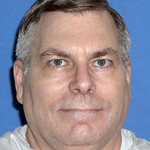
Lester Bower
Texas — Convicted: 1984; Executed: 2015
Texas executed Lester Bower on June 3, 2015, after he had spent more than 30 years on death row. Bower unsuccessfully challenged his conviction and sentence on numerous grounds, including that prosecutors had withheld evidence from the defense supporting his innocence claim.
Bower was convicted of the 1983 murder of four men in Grayson County, Texas. He admitted that he had met with one of the men to purchase an ultralight aircraft, which he said the others helped him disassemble and load into his truck. But he consistently denied any involvement in the killings. The evidence against him was circumstantial: calls made to the man selling the aircraft and Bower’s possession of the same type of ammunition that was used in the killings. Prosecutors obtained the conviction, in part, by arguing that the ammunition provided a vital link between Bower and the killings because that type of ammunition was extremely rare.
After Bower’s conviction, his lawyers obtained records from the FBI and prosecutors showing that the ammunition was not as rare as prosecutors had said, and learned that prosecutors had withheld information about a tip to police that the murders may have been connected to drug trafficking. Later, a woman came forward saying that her boyfriend and his friends had committed the murders after a drug deal had gone wrong. The wife of one of the other men corroborated her story.
In a court filing shortly before his execution, Bower’s attorneys argued “This is a case in which there is a significant lingering doubt regarding guilt or innocence.” In addition to issues related to his innocence, three Supreme Court justices said that Bower should have been granted a new sentencing hearing as a result of what they called a “glaring” constitutional error that impaired the jury’s consideration of mitigating evidence in his case.
Read: “DOUBTS STILL PLAGUE THE 31-YEAR-OLD LESTER BOWER CASE BUT TEXAS IS ABOUT TO KILL HIM ANYWAY,” Jordan Smith, The Intercept, June 1, 2015.
Read: “Texas plans to execute an inmate who has been on death row for 30 years,” by Mark Berman, The Washington Post, June 2, 2015.
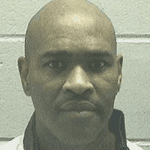
Brian Terrell
Georgia — Convicted: 1995; Executed: 2015
Just before 1:00 a.m. on December 9, 2015, Georgia executed Brian Terrell. It took a nurse nearly an hour to find a vein for the lethal injection IV and, as the execution drug was being administered, Terrell mouthed the words: “Didn’t do it.” His lawyers argued that no physical evidence linked Terrell to the murder and that his conviction and death sentence were the product of prosecutorial misconduct and false and misleading testimony. Physical evidence from the crime scene leaves substantial questions as to Terrell’s guilt: footprints found near the victim’s body were smaller than Terrell’s feet, and none of the 13 fingerprints found by investigators matched his fingerprints. Georgia tried Terrell three times. The first trial ended in a mistrial when jurors could not agree on whether he was guilty. The second resulted in a conviction that was later overturned by the Georgia Supreme Court. The third trial concluded with a conviction and death sentence. The key testimony against Terrell came from his cousin, Jermaine Johnson, a witness whom defense investigators say later admitted to having lied to save himself. Johnson spent a year in jail facing the threat of the death penalty before he made a deal with prosecutors to testify against Terrell in exchange for a five-year sentence. Johnson told defense investigators that police and prosecutors had pressured him into giving false testimony against his cousin. Terrell’s lawyers argued that prosecutors also presented misleading testimony suggesting that a neighbor had seen Terrell at the murder scene, when in fact she had told authorities that he was not the man she had seen. At Terrell’s trial, the prosecutor emphasized the importance of Johnson’s testimony, saying during his closing statement, “If you never heard anything about Jermaine Johnson in this case, if he had never testified, would you have enough information to make a decision in this case? You wouldn’t.”
Read: “Georgia man set to die for killing of mother’s friend,” Kate Brumback, Associated Press, December 5, 2015.
Read: “Clemency Hearing to be Held for Georgia Death Row Inmate,” Associated Press, December 5, 2015
Read: “Brian Keith Terrell appeals to federal court to stop execution,” Rhonda Cook, Atlanta Journal-Constitution, December 7, 2015;
Read: “Georgia Executes Brian Keith Terrell after struggling to find vein,” Rhonda Cook, Atlanta Journal-Constitution, December 9, 2015.
Read Brian Terrell’s application for clemency here.

Richard Masterson
Texas — Convicted: 2002; Executed: 2016
Texas executed Richard Masterson on January 20, 2016, amid questions as to whether any murder had occurred at all. Masterson had sought a stay of execution based on what his lawyers alleged was “evidence of State fraud, misconduct, and his actual innocence.” Masterson’s filings challenged the forensic testimony presented by the prosecution in the case, the accuracy of instructions given to jurors, and the constitutionality of Texas’ lethal injection secrecy law.
Medical examiner, Paul Shrode, after having been told that Masterson had confessed to putting a sleeper hold on the victim during an episode of erotic asphyxiation, ruled Darrin Honeycutt’s death a homicide and testified that Honeycutt had died by strangulation. Masterson’s lawyers argued in federal court filings that prosecutors had concealed evidence that Shrode was unqualified to perform Mr. Honeycutt’s autopsy, botched the autopsy, falsified his credentials, and gave false testimony in this case and in other capital murder trials. Two pathologists who examined the Honeycutt autopsy data say that the Shrode was unqualified and incorrectly ruled the death a homicide, when it was most likely caused by a heart attack.
In 2010, Ohio Governor Ted Strickland commuted the death sentence of Richard Nields based upon concerns about Dr. Shrode’s assertion that the victim in that case had been strangled. Shrode was subsequently fired as chief medical examiner in El Paso County, Texas, after discrepancies were found in his resume and revelations were made about his unsupported testimony in the Ohio case.
Masterson’s attorneys argued that Masterson falsely confessed to the murder charges during a period of withdrawal from addictive stimulants in which he exhibited suicidal behavior. In a separate filing, they challenged the fairness of his trial because the judge had failed to inform jurors that they could have convicted Masterson of a lesser offense, rather than capital murder. A third filing had challenged the constitutionality of Texas’ lethal injection secrecy law, which prevented inmates from obtaining information about the source of the state’s execution drugs.
Read: “After court defeat, Houston killer’s lawyers launch appeals blitz in state and federal courts,” Allan Turner, Houston Chronicle, January 12, 2016.
Read: “DID A DUBIOUS CONFESSION SWAY A MEDICAL EXAMINER’S AUTOPSY IN A TEXAS DEATH PENALTY CASE?,” Jordan Smith, The Intercept, January 19, 2016.
Read: Masterson’s stay motion here and his petition for writ of habeas corpus here.
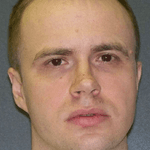
Robert Pruett
Texas — Convicted: 2002; Executed: 2017
Texas executed Robert Pruett on October 12, 2017, after the Texas courts deemed DNA evidence in his case “inconclusive” and denied him a stay of execution to further review the evidence in his case. Pruett was sentenced to death in 2002 for the 1999 stabbing death of Officer Daniel Nagle, a state correctional officer who was at the center of a prison corruption investigation. Pruett had long maintained that he had been framed for the murder.
Earlier on the day of the murder, Officer Nagle had given Pruett a disciplinary write-up for eating a sandwich in an unauthorized area. A bloody shank and a torn-up copy of the disciplinary report were found next to the officer’s body. Pruett had no history of prison violence. The prosecution’s case turned on dubious testimony from prison informants and the junk-science testimony of a forensic analyst who linked the tape wrapped around the handle of the shank used to kill Nagle to the prison craft shop in which Pruett’s cellmate worked. A state investigator’s notes that had not been disclosed to the defense revealed that a key prison witness — Harold Mitchell — had been promised a transfer to a prison close to his family’s home in Virginia if he testified against Pruett, and had been threatened with being charged with Nagle’s murder if he did not.
Pruett’s post-conviction lawyers later debunked the forensic methodology the state’s expert had used to link the tape on the murder weapon to Pruett, and results of a subsequent DNA test of the murder weapon found DNA that did not match either Pruett or Nagle. According to Pruett’s clemency petition, Officer Nagle had been working to identify corrupt correctional officers who had been helping prison gangs launder drug money, and Nagle’s name had been discovered on a secret note that had been passed between inmates, which said that a prison gang wanted the officer dead. The same day Pruett was indicted, four correctional officers were indicted on federal bribery charges for participating in a drug smuggling ring. Pruett’s lawyers argued that the unidentified DNA may belong “to the person [who] killed Nagle.”
Read: “Junk Science? Unreliable Witnesses? No Matter, Texas Plans to Execute Robert Pruett Anyway,” Nathalie Baptiste, Mother Jones, October 10, 2017.
Read: “Days from execution, man convicted in prison guard’s murder insists on innocence,” Jolie McCullough, The Texas Tribune, October 10, 2017;
Read: “Killer or Fall Guy? Was Daniel Nagle murdered by a man acting alone, or was it part of a larger conspiracy?,” Chase Hoffberger, The Austin Chronicle, April 24, 2015.

Carlton Michael Gary
Georgia — Convicted: 1986; Executed: 2018
Georgia executed Carlton Michael Gary on March 15, 2018 without any federal court review of substantial evidence suggesting that he did not commit the crimes for which he was convicted and sentenced to death. Prosecutors argued that in the late 1970s a single serial rapist and murderer killed three elderly white women and burglarized and raped a half-dozen others with a signature style that led the media to salaciously dub him the “Stocking Strangler.” But if, as the prosecution insisted, a single person committed these murders, evidence that was never presented to the jury and never considered by any federal court suggests that it couldn’t have been Carlton Gary.
Although Gary was charged with three rapes and murders, the prosecution presented evidence of other uncharged crimes under the theory that they had all been committed by the same person. The most damning of that evidence was the eyewitness testimony of a surviving victim who dramatically identified Gary as the person who had raped her and tied a stocking around her neck. However, a police statement withheld from the defense indicated that the witness had initially told investigators that she had been asleep and her bedroom dark at the time of the assault and she could not describe, let alone identify, her attacker.
Post-conviction DNA testing of semen stains on the victim’s bedclothing excluded Gary. Gary sought to test DNA evidence from other crime scenes that was in the possession of the Georgia Bureau of Investigation, but as a result of improper handling, the samples had been contaminated and were untestable.
During the post-conviction process, Gary learned that police had made a mold of a bite mark from one of the victims and had consulted with a leading forensic odontologist, but had never presented him as a witness. When that expert examined the mold, he concluded that the markings could not have been made by Gary. Shoeprint evidence from the scene was also withheld from Gary’s defense team until 20 years after his trial. The size 10 print found at one of the crime scenes could not have been left by Gary, who wears size 13½ shoes. Finally, police claimed that Gary had confessed to participating in the crimes, but not to raping or murdering the victims. But police neither recorded nor contemporaneously documented his alleged statement, which he denied making, and his lawyers argued that the supposed statement “fits all the recognized hallmarks of a false confession that never happened.”
In his unsuccessful clemency petition, Gary’s lawyers argued: “We are not talking about questionable recanting witnesses who came forward long after trial, but hard physical evidence of innocence.” The Georgia Board of Pardons denied the petition.
Read: David Rose, The Big Eddy Club: The Stocking Stranglings and Southern Justice (The New Press, 2011 ed.).
Read: David Rose, DNA Shows He’s Not a Killer. Georgia Still Wants to Execute Him Tomorrow, The Daliy Beast, March 14, 2018.
Read: Tim Chitwood, In final appeals, Stocking Strangler attorneys say Ga. is about to execute innocent man, Columbus Ledger-Enquirer, March 13, 2018.
Read: Kate Brumback, Citing new evidence, condemned Georgia inmate seeks mercy, Associated Press, March 8, 2018.

Domineque Ray
Alabama — Convicted: 1999; Executed: 2019
Alabama executed Domineque Ray on February 7, 2019. Ray’s execution attracted national attention when Alabama refused to permit his imam to be present in the execution chamber in circumstances in which Christian prisoners were provided religious comfort by a Christian chaplain. However, Ray had also argued that he was innocent and that the evidence against him was false and unreliable.
Ray was convicted in July 1999 of the alleged rape, robbery, and murder of 15-year-old Tiffany Harville in Selma, Alabama. No physical evidence linked Ray to the murder, and the only evidence that Harville had been raped and robbed came from a severely mentally ill man, Marcus Owden, who confessed to the crime and avoided the death penalty by implicating Ray. Owden was also the only person who placed Ray in Selma at the time of the murder.
In February 1998, Owden’s lawyers sought the appointment of a clinical neuropsychologist to evaluate him in preparation for potential mental health defenses to present in his own trial. The prosecution objected, claiming Owden “has no mental impairment.” In its opening statement at Ray’s trial, the prosecution told the jury that Owden was “fine” and that there was “no question about [his] mental ability.” In fact, Alabama Department of Corrections records that were never disclosed to Ray’s lawyers, showed evidence of Owden’s mental illness as early as 1994. The records documented that Owden had been diagnosed with serious mental illness, psychosis, and schizophrenia; that he was suffering from hallucinations and delusions, and exhibited signs of bizarre speech and distortions of cognition; and that he had a propensity for lying.
Ray was convicted and, after a one-day penalty phase, a non-unanimous sentencing jury recommended 11 – 1 that he be sentenced to death. In September 1999, the trial court imposed the death penalty
In 2017, Ray’s federal habeas corpus lawyers interviewed Owden, who for the first time told them about his schizophrenia diagnosis and signed a release authorizing them to obtain his mental health records. The records documented prosecutors’ knowledge that Owden had schizophrenia and was suffering from delusions and auditory hallucinations when he accused Ray of the rape and murder and testified against him. Ray’s lawyers argued that the prosecution’s deliberate suppression of the mental health evidence, despite being aware of Owden’s mental illness, violated Ray’s right to due process and entitled him to a new trial. As Ray attempted to litigate that issue, Alabama prosecutors successfully petitioned the state courts to set Ray’s execution date. The Alabama state and federal courts dismissed Ray’s due process claim and on the day of his execution, the U.S. Supreme Court declined to review the merits of his prosecutorial misconduct claim.
Read the U.S. Supreme Court petition for writ of certiorari in Ray v. Alabama.
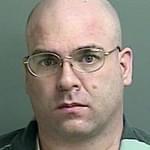
Larry Swearingen
Texas — Convicted: 2000; Executed: 2019
Texas executed Larry Swearingen on August 21, 2019, despite significant flaws with virtually every piece of forensic evidence in his case and strong evidence that it was physically impossible for him to have committed the crime. His conviction was grounded in what his lawyers described as “false and misleading” junk-science testimony that were later rebutted by numerous forensic experts. That included: false expert testimony linking Swearingen to the murder weapon, false testimony dismissing exculpatory blood evidence, false cell tower testimony, and false testimony concerning the time of death. “They are going to execute someone that the legitimate forensic science has proven innocent,” Swearingen’s appeals lawyer, James Rytting, told the Texas Tribune. “And the execution is going through on the basis of other forensic science that is borderline quackery — in fact it is quackery.”
Swearingen was sentenced to death in July 2000 for the murder of Melissa Trotter, who was strangled with a pair of pantyhose and whose body was later dumped in a state forest. A county medical examiner testified at trial that Trotter had been dead nearly a month at the time her body was discovered. She later recanted that testimony, saying Trotter died no more than two weeks before. Eight other experts — including forensic pathologists, forensic entomologists, and a forensic anthropologist — agreed with that assessment. However, given that time of death, it was impossible for Swearingen to have committed the murder. Three days after Trotter’s disappearance, Swearingen was arrested for outstanding traffic warrants and was still in jail three weeks later, when Trotter’s body was discovered.
The evidence linking Swearingen to the murder also was scientifically suspect. Trotter was strangled with one leg of a pair of pantyhose. A Texas crime lab technician falsely testified that pantyhose found in his Swearingen’s home were “a unique physical match” to the ligature, “to the exclusion of all other pantyhose.” In closing argument to the jury, the prosecution called this evidence “the smoking gun” of Swearingen’s guilt. However, the technician’s notes of her initial examination of the evidence — which were withheld from the defense at trial — indicated that she initially had found “no physical match between ligature & pantyhose.” The defense presented expert testimony pantyhose from a Cal Poly Pomona professor of textile science that the two hose “were cut in the same basic silhouette, [but] they were not cut from the same piece. These are not a match, and certainly not to ‘the exclusion of all other pantyhose.’” Weeks before the execution, the Texas crime lab director, Brady W. Mills released a letter admitting that the technician’s trial testimony was overstated.
Shortly before the execution, Mills also conceded that testimony by a crime lab serology expert dismissing exculpatory blood evidence had also been inaccurate. DNA testing of blood flakes found under Trotter’s fingernails produced a DNA profile of an unidentified male that excluded Swearingen. The serologist testified without any scientific basis that the blood excluding Swearingen came from contamination “either at the time the sample was being collected” at autopsy “or after the sample was being collected.”
Read: Tom Jackman, Did faulty science, and bad testimony, bring Larry Swearingen to the brink of execution?, The Washington Post, August 17, 2019.
Read: Jolie McCullough, Larry Swearingen is set for execution for a 1998 Texas slaying. His lawyer says bad science got him on death row, The Texas Tribune, August 21, 2019.
Read: Juan A. Lozano and Michael Gracyk, Man set to be executed for killing of Texas college student, Associated Press, August 21, 2019.
Read: Keri Blakenger, ‘Lord forgive ’em’: Larry Swearingen executed despite claims of innocence, Houston Chronicle, August 21, 2019.

Walter Barton
Missouri — Convicted: 1993; Executed: 2020
Missouri prosecutors tried Walter Barton five times for the brutal 1991 stabbing death of 81-year-old Gladys Kuehler. Twice, Barton’s convictions and death sentences were overturned because of prosecutorial misconduct. Two other times, the trials ended in mistrials.
Barton was one of three people, along with a neighbor and Kuehler’s granddaughter, Debbie Selvidge, who discovered her body. He consistently maintained that he pulled Selvidge away from Kuehler’s body, getting droplets of Kuehler’s blood on his clothes. His conviction rested on junk science testimony that small blood stains on his clothes had been “impact stains” from “high velocity” blood spatter, which the prosecution argued occurred while Barton was purportedly stabbing Kuehler. However, a 2015 analysis by crime scene analyst Lawrence Renner concluded that the bloodstains on Barton’s clothes were actually “transfer stains,” likely caused by contact with other bloodstains. Kuehler had been stabbed 50 times, and Renner said that the perpetrator of such a grizzly murder would have been covered in the victim’s blood. Prior to his execution, three jurors who had voted to convict Barton signed affidavits saying that the new analysis of evidence from the case would have affected their guilt-stage deliberations.
In addition to the blood-spatter testimony, prosecutors presented testimony from a jailhouse informant, Katherine Allen, who had been convicted 29 times for fraud, forgery, and related offenses. Allen claimed that Barton had confessed to her and then threatened to kill her “like he killed that old lady” if she disclosed his alleged confession. Allen lied to the jury that she had only six convictions and that she had received no benefits for implicating Barton. Prosecutors withheld from the defense the fact that they had dismissed an additional case against Allen in exchange for her testimony in Barton’s fifth trial.
Read: Luke Nozicka, Days before Missouri man’s execution, jurors see new evidence that raises doubts, Kansas City Star, May 12, 2020.
Read: Liliana Segura and Jordan Chronic, Reopening Missouri amid the pandemic means executing a possibly innocent man, The Intercept, May 14, 202.
Read: Jim Salter, Missouri moving ahead with execution plans, Associated Press, May 14, 2020.

Nathaniel Woods
Alabama — Convicted: 2005; Executed: 2020
Nathaniel Woods was sentenced to death after a non-unanimous jury sentencing recommendation in August 2005 for the killings of three Alabama police officers. His case featured several hallmarks of wrongful conviction: official misconduct, coerced informant testimony, and racial discrimination.
Prosecutors acknowledged that Woods’ co-defendant, Kerry Spencer, shot the officers in an incident in a drug house. Spencer, who received a life sentence in his trial, has consistently maintained that he shot the officers in self-defense, after they had beaten Woods during a shakedown and then pointed a gun at Spencer. Knowing he was not the shooter, prosecutors offered Woods a plea deal for 20 – 25 years, but Woods’ lawyer advised him not to take it, misinforming him that he could not be convicted of capital murder as an accomplice.
After Woods, who is Black, turned down the plea deal, prosecutors for the first time claimed that he had been the mastermind of a plan to kill the three white officers because he supposedly hated police. In support of that new theory, they presented testimony from Woods’ girlfriend that he purportedly had made comments about his hatred of police. But even before the trial, she recanted that statement, saying police had threatened to charge her with parole violations if she did not testify. At trial, the court refused to allow the defense to present evidence of police misconduct.
Spencer called Woods “100 percent innocent.” “Nate ain’t done nothing,” he said. “All he did that day was get beat up and he ran.”
Read: Lauren Gill, Alabama prepares to execute a man whose case is haunted by claims of police misconduct, The Appeal/AL.com, February 24, 2020.
Read: Anne Branigin, Alabama Prepares to Execute Man Found Responsible for Murdering 3 Police Officers — Without Pulling a Single Trigger, The Root, February 25, 2020.
Others suggest that more than 40 people have been executed in the United States despite serious doubts as to their guilt. See EXECUTED BUT INNOCENT?, Save-Innocents.com.

Photo courtesy of Marcellus Williams’ legal team.
Marcellus Williams
Missouri — Convicted: 2001; Executed: 2024
Missouri executed Marcellus Williams on September 24, 2024, despite serious doubt regarding his involvement in the murder of Felicia Gayle in 1998. His innocence claims received the support of more than one million petition-signers, the sitting St. Louis County Prosecuting Attorney, and numerous political officials and advocacy organizations.
St. Louis Police suspected that Ms. Gayle’s murder was a robbery gone wrong, and the crime scene details matched those of a crime that occurred just a few weeks earlier. No arrests were made until after Ms. Gayle’s family offered a $10,000 reward for information leading to the killer’s arrest. A jailhouse informant, Henry Cole, told police that Marcellus Williams, a former cellmate of his, confessed to killing Ms. Gayle. Cops later secured a second informant, Mr. Williams’ former girlfriend, Laura Asaro, who told police that he had killed Ms. Gayle. Both Mr. Cole and Ms. Asaro were facing unrelated charges and stood to benefit from testifying for the state. Despite changing testimony from each informant, Mr. Williams was charged, convicted, and sentenced to death for the murder of Felicia Gayle.
No physical evidence discovered at the crime scene could be connected to Mr. Williams, but Ms. Asaro claimed that he had scratches on his face the day following the murder. Scientific testing revealed no foreign DNA under Ms. Gayle’s fingernails. Mr. Cole told the jury that Mr. Williams stole clothing from the victim’s house to cover bloody stains, yet no clothes were determined to be missing from Ms. Gayle’s home. Before Mr. Williams’ trial, the circuit court judge refused to allow DNA testing of some of the evidence collected from the crime scene. In 2015, Mr. Williams was given permission for DNA testing of the murder weapon, which revealed a male DNA profile inconsistent with that of Mr. Williams.
With this new evidence, Mr. Williams appealed to the Missouri Supreme Court, but they dismissed the new evidence and set an August 2017 execution date. The same day Mr. Williams was scheduled to be executed, he received a stay of execution from then-Missouri Governor Eric Greitens, who created a Board of Inquiry to review the DNA evidence. A five-member board consisting of retired judges was impaneled to “assess the credibility and weight of all evidence” in Mr. Williams’ case. In the order from Gov. Greitens, he indicated that the board must make a final report and recommendation to the governor “as to whether or not [Mr.] Williams should be executed, or his sentence of death commuted.”
In June 2023, before the board of inquiry had issued a report, Governor Mike Parson issued an executive order rescinding Gov. Greitens’ order to establish the board. In January 2024, state Attorney General Andrew Bailey asked the Missouri Supreme Court to set an execution date for Mr. Williams. Days later, St. Louis County Prosecuting Attorney Wesley Bell filed a motion in the St. Louis County Circuit Court, asking the Court to vacate Mr. Williams’ death sentence. Following a 2021 Missouri law that grants prosecutors the authority to intervene in cases when there is “information that the convicted person may be innocent,” PA Bell filed his motion to vacate Mr. Williams’ sentence and conviction. In his motion, PA Bell noted that “this never-before-considered evidence, when paired with the relative paucity of other credible evidence supporting guilt, as well as additional considerations of ineffective assistance of counsel and racial discrimination in jury selection, casts inexorable doubt on Mr. Williams’ conviction and sentence.”
On June 4, 2024, the Missouri Supreme Court set a September 24, 2024, execution date for Mr. Williams, despite PA Bell’s pending motion to vacate his sentence and conviction. A month later, AG Bailey asked the state supreme court to block the requested evidentiary hearing associated with PA Bell’s motion, which the St. Louis County Circuit Court scheduled for August 21, 2024. Days later, the Missouri Supreme Court blocked the AG’s efforts, allowing the evidentiary hearing to proceed. On August 21, 2024, Mr. Williams agreed to enter an Alford plea in exchange for a sentence of life without parole. This agreement would have ensured that Mr. Williams, who consistently maintained his innocence, would not be executed. Hours after Judge Bruce F. Hilton accepted the plea agreement, AG Bailey asked the state supreme court to block the deal, claiming that Judge Hilton did not have the authority to resentence Mr. Williams. In response, the Missouri Supreme Court ordered the lower court to set aside the plea agreement and move forward with the scheduled evidentiary hearing, which was rescheduled for August 28, 2024.
Mr. Williams’ plea agreement was reached as both parties were scheduled to begin an evidentiary hearing on PA Bell’s motion to vacate Mr. Williams’ death sentence. Prosecutors unexpectedly announced that the murder weapon contained the DNA of members of the trial prosecution team. Consistent with his assertion of innocence, the murder weapon does not show any DNA from Mr. Williams, but the new finding indicated that the crime scene evidence was mishandled by prosecutors. At the August 28, 2024, evidentiary hearing, PA Bell’s office conceded that the prior administration committed constitutional errors contributing to Mr. Williams’ unreliable conviction, including the mishandling of the murder weapon, destruction of fingerprints, and the improper exclusion of Black jurors because of their race.
On September 12, 2024, Judge Hilton denied PA Bell’s motion to vacate Mr. Williams’ conviction and death sentence, writing that “there is no basis for a court to find that [Mr.] Williams is innocent, and no court has made such a finding.” On September 24, 2024, the United States Supreme Court denied an emergency motion to stay Mr. Williams execution, and Gov. Parson refused to intervene, denying clemency for Mr. Williams and allowing his execution to proceed.